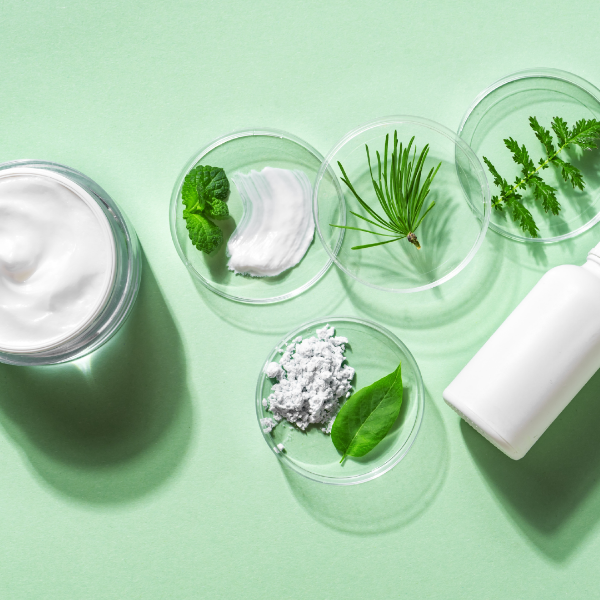What a beautiful day we are having! It is the perfect time to stir up some magic in the lab—today’s hot topic is all about waterless skincare and whether it is worth the hype or not.
Waterless skincare has taken the beauty world by storm. From solid cleansers to powdered masks and luxurious balms, the idea of formulating without water is seductive. Brands are drawn to it for its sustainability claims, concentrated actives, and preservative-free marketing appeal. But while waterless beauty is certainly innovative, it isn’t always better. In fact, sometimes it can compromise the very performance, stability, or sensorial experience you’re trying to deliver.
So how do you know when anhydrous is the right format for your next product—and when emulsions still win?
This article breaks down the real benefits and drawbacks of going waterless, helping you make the best formulation choices for your brand and customer base.
The Appeal of Waterless Beauty
There’s no doubt that waterless formats are here to stay. Products like shampoo bars, oil serums, stick moisturisers, and powder-to-foam masks offer clear benefits:
- Longer shelf life (if oxidation is managed)
- Minimal or no preservatives needed
- Concentrated actives (oil-soluble only) and butters
- Eco-friendly packaging and lower shipping weights
- Appeal to zero-waste and travel-friendly consumers
Anhydrous formats use butters, oils, esters, waxes, oil-soluble actives and powders instead of water and water-soluble actives, which can feel more nourishing, potent, and natural to customers. For certain use cases, like lip balms, massage oils, or stick applicators, waterless makes total sense. It can elevate your sensorial game and align beautifully with a brand story focused on sustainability or simplicity.
But is waterless the best option across the board?
Not necessarily.
The Formulation Challenges No One Talks About
Formulating without water may seem simpler, but it often demands more precision. The absence of water introduces its own risks:
- Microbial risk still exists. Powders, botanicals, and clays can carry spores or bacteria, and if moisture is introduced during use (say, from fingers or humidity), contamination is very likely to happen.
- Oxidation is a bigger issue. Rich oils and butters can go rancid, causing discolouration, scent degradation, and performance loss.
- Texture is harder to master. Without water, you’re building your product’s feel from waxes, butters, oils, and esters—which can become greasy, draggy, grainy or sticky.
- Limited actives. Many of the most loved skincare ingredients—niacinamide, peptides, AHAs, panthenol, vitamin C—are water-soluble. In anhydrous systems, they’re unusable and you would have to do without it.
So while skipping water might sound appealing, you’re not skipping complexity.
Why Emulsions Still Reign Supreme
Water isn’t just a “filler,” and we need to move beyond that myth. Water is a critical functional component:
- It enables the delivery of water-soluble actives.
- It allows the use of humectants (like glycerin or hyaluronic acid) that hydrate the skin.
- It creates the light, silky, non-greasy textures consumers love.
- It facilitates multi-phase systems that deliver both oil- and water-soluble ingredients.
And I’ll even share with you a little secret: if using water bothers you so much, you can replace part or all of it with hydrolats (flower waters) or you can create plant infusions with your water phase to add some additional gentle goodness to your formulation.
Emulsions are ideal when:
- You want lightweight, fast-absorbing texture
- You’re targeting hydration or barrier repair with humectants and emollients
- You want the power of niacinamide, peptides, AHAs or other water-soluble actives in your formula
- You’re building a routine product that needs to layer well under makeup or sunscreen
In short? If your brand is about efficacy, results, and dermo-cosmetic performance—emulsions are often your go-to.
When Waterless Is the Smart Choice
That doesn’t mean waterless has no place. In fact, it can be the perfect format for certain use cases:
- Lip balms, masks and scrubs
- Oil-based makeup removers (side note: my skin swears by oil cleansers only and it has made a huge difference)
- Solid cleansing balms
- Powdered exfoliants or masks
- Massage bars or solid moisturisers
- Oil-based serums with retinol or lipophilic actives
- Perfume balms or roller oils
- Shampoo or conditioner bars
The key is to match the format with the intended function.
Smart Tips for Going Waterless
If you do go waterless, be prepared to:
- Use stabilised oils and include antioxidants like tocopherol or rosemary extract.
- Choose solid packaging that protects from light, air, and moisture.
- Test for oxidative and heat stability, not just microbial resistance.
- Formulate for sensory experience, not just ingredient list appeal.
- Educate your audience about usage, hygiene, and storage (especially for powders or balms).
And yes—even without water, you still need a CPSR (Cosmetic Product Safety Report), PIF, proper labelling, and documentation. Waterless doesn’t mean regulation-free.
Before saying goodbye, let me leave you with my final thoughts.
As a beauty brand founder, your job isn’t to follow every trend—it’s to lead with intention.
Waterless formats offer exciting, innovative possibilities. They can elevate your brand story and create sensorially rich, sustainability-driven experiences.
But emulsions? They’re still the gold standard for results, especially when skin health and active delivery are key.
So whether you’re planning a luxurious balm or a science-backed serum, let your formula follow your function.
Start with the skin concern. Understand the user ritual. Then choose the format that serves your vision best.
Here’s to formulas that work and brands that thrive!
From My Lab to Yours!
Rose






Add comment
You must be logged in to post a comment.